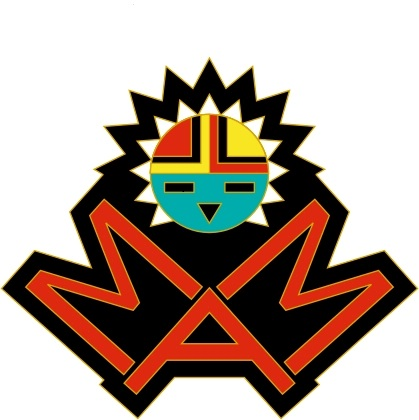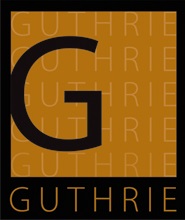
Pictured Is Randy Taylor.
Editors Note: When Randy Taylor of Mesa, AZ. First broke into the game of bowling in 1964. Rubber and plastic bowling balls were the norm for the game. Along with wooden lanes and conditioning bowling lanes by hand. In the last five-and-a-half decades, he has experience a lot of changes in the game. Some of those changes were: keeping score by hand to automatic scoring. Rubber and plastic bowling balls. To urethane, resin, and assymetrical cover stocks. And the conditioning of bowling lanes from hand to machine. Where today, machines are able to put down a shot just by putting a code into a computer. It has been a great ride for him in the game of bowling. Below are a list of topics that were covered in this conversation with him.
By Michael 'Chip' Begg - Managing Editor - thetenpinexpress.com - Director Mesa Metro Association.
Mesa, AZ. - - - After being involved in the game of bowling myself, for the last 56 years. (I got started in 1966). I have heard 100s of stories about how people got started in our great game.
Some stories that I have heard throughout the last 56 years, have been better than others.
For Randy Taylor, of Mesa, AZ., his story of how he got started in the game. Would fall in the category of some are better than others.
He worked for the Caro , MI.; water works department from Sept 1972 to 1974 . He would install water meters and repair them during winter months. The small town had a 20-lane center with a full house of bowlers every night . He got married in July of 1972 and joined a men's league on Tuesday night . He averaged 202 that year . The town had never had a 300 or 800 . Above ground ball returns we’re still around where needed . You see the water level for good tasting water was only 10ft. So, flooding would happen frequently. Underground ball returns weren’t noticed until the new centers being installed in the early 60s.
He was changing his small town and bowling in the spring of 1974 to work for a resurfacing bridge with latex concrete from 74-78. No time for bowling. Working from early spring till deer season ( Nov15 ), was fine for him . His work stopped and started back up in early March. Then in the fall of 1978 his wife Nancy found a job at the bowling center across the street. Working the desk was her passion. He would stop in around 10pm and practice for 2 hrs. The manager was surprised to see him bowl so well and asked if he would work @ Pro Bowl East as a lane man & chase calls at night . He said sure if he got free bowling. He agreed . It was only 35cents a game .
He went back to construction, road work for two more years . Worked in the bowling center during fall and winters then in 1980, the owners of Pro Bowl East and West centers wanted to send him to Brunswick's mechanic pinsetter school to learn how to work on pinsetters and maintain them . He was OK with the idea . Because bowling and the PBA tour was always coming to town . The competition was addictive. The question then became: could he make money and do something he enjoyed to do?
"I worked on the roads in Michigan in 1978 . In the fall I we would take 4 months off , due to cold weather . My wife and daughter were living out of our motor home . Across the street was a bowling center and we discussed working at the center," he said, of how his career in bowling began. "She started working as a desk person. I would go to the center and practice . One night the manager, Ollie, came down to talk to me. He said they needed a night mechanic . He offered me the job and I said yes. I knew if things worked out that my future could be changed . Not traveling , spending time with family was my goal. Two years later I joined the PBA and my employer , Pro Bowl East."
When he started his new job at the bowling center, he knew working on pinsetters for the first time would be an ongoing on the job training experience. Until he felt comfortable enough to where he didn't need someone looking over his shoulder all of the time. This was something he embraced 100 percent. Also, he started working in the bowling industry during a time when the lane machines of today where not invented yet. And the conditioning of the lanes was done by hand.
"I learned how to hand strip 32 lanes and oil with a Century 100 . As technology got better, and if you wanted to attract bowlers, your goal as a lead mechanic was keep your machines clean first and foremost. Next strip and oil at least daily. Keep approaches clean and have daily cleaning of every area at least twice daily. No easy task, " he said, of the early years in the game. "Every machine in the centers today is so precise that it's hard to fathom. Stripping and oiling simultaneously 40 lanes in 1 hour. The best tool for the mechanic and changes our ability to score easier for all. Do we want good scores ? Yes. Do you want happy league bowlers ? Of course ! It always follows."
It was the late 70s and early 80s that synthetic lanes started to replace wooden lanes in bowling centers throughout the United States. The synthetic lanes cut down the cost of maintaining a wooden lanes house by 100 percent. Every two years wooded lanes had to be resurfaced. Prior to being resurfaced, each lane had to be checked for bad boards and replaced. It was a time-consuming process that had to be done. As a fan of the old school of bowling, I still believe that wooden lanes produced what a true average was for a bowler, and it meant something to earn an honor score.
"Scoring on wood lanes was tougher. Your ability to strike often was always more about entry and angles to carry as you bowled your 3-game set for 800s. The balls of the 70's were rubber or plastic. Synthetic lanes and their overlays on lanes started in 1979 . Holiday lanes was my first experience on them," he said, of bowling on synthetic lanes for the first time. "I led the qualifying of 12 games, high qualifier plus 598 , I averaged 249.83 . So, you ask me and I will say synthetic surfaces can always produce higher scores because of the friction created by the backends. You have a surface on wood that has a top coat of urethane that wears out within a year so your lack a hook where it's needed to score. The scoring pace in that Michigan Majors tournament stood for 4 years as I was told . I left one of the largest bowling associations that produced some of that era bowling .
"From Detroit and Lansing, Michigan . Complaints will always be given consideration. Keep your cool and become more tuned to composite league scoring because you don't want your complainers to think you're not listening," he said, of keeping bowlers happy. "Once you know the ability of say 100 bowlers. Your ability as a lane tech should be known to your league that you have that under control. Doing it well is always changing because bowlers buy equipment according to their ability and where they bowl. I hope you all still love this sport as much as I do."
So, that leads to the next obvious question: Does he see wooden lanes making a comeback?
"No, the owner has little choice once the lanes can't be resurfaced or screened and top coated. It helps the mechanic because he no longer needs to replace individual boards when they're broken causing balls to jump, " he said, on wooden lanes making a comeback. "I would replace 200 ft. of approach boards when we sanded the approaches and would put a urethane finish to help wear and tear. And protect the wood. Synthetics are here to stay. Happy bowlers. Some centers in the Midwest have opted to put new wood lanes in. But that is rare. due to cost. No hurting if you bowl on ss."
OPENING A NEW DOOR IN HIS CAREER.
After working for Pro Bowl East for four years, Randy's fortuned changed in the bowling industry. He applied for and became a head mechanic at a bowling center on a naval base in San Diego, CA.
" I became the lead mechanic of a small bowling center 12 lanes on the Naval Amphibious base in Coronado California. I worked there for 5yrs. From 1982 thru 1987. Rebuilding every pinsetter from rebuilding the pin decks. removing the upper deck from the stationary deck. Rebuilding parts that were loose and needing cleaning and oiling. Rebuilt the turrets and trip lever assemblies," he said, of getting his new center in good shape "I had Navy seals that worked part time that helped our summer project that summer of 1982. I had gone to Brunswick's pinsetter school in 1980. Don Bayne was our teacher and mentor. I was given the opportunity to go by owners of Pro Bowl West . They said I needed to stay and work 2years. If I decided to leave, and they would want their cost to send me to school for four weeks. I signed the agreement and stayed 2 years. Deciding to try the skills on the PBA national tour the summer of 82."
As fate would have it, Randy's career changed again for the better in 1987 as well. He would become a father of twins. Kenny and Kristi, and become the head mechanic of one of the largest bowling centers in San Diego County.
"In 1987 I was blessed to have my Twins born in Sept that year and was told that I needed a real job paying more than $8.00 hr. My wife Barbara was serious. I quickly found work at Mira Mesa Bowl . 40 lanes and busy every night. I could share with U so many stories of friends , bowlers and mechanics I trained and helped teach them lane patterns and machines," he said, of this career change. "I worked with and quickly became the go to guy to help mechanics figure problems out. Whether pinsetters scoring or machines. I helped complete the opening of North County Lanes in the fall of 1988. A 60-lane super center built by Leisure Time Sports. Who was building centers in San Diego also in that year . It was called the Grove also 60 lanes.."
According to San Diego Bowling. Com. These bowling centers are still operating in San Diego County. They are: Admiral Robinson Center (40); Bowlero Chula Vista (48); Leatherneck Lanes (12); Mira Mesa Lanes (44); Parkway Bowl (68); and Sea + Air Bowl (24).
The Covid-19 pandemic has been around for two years now, and because of the pandemic, bowling centers throughout the United States were forced to close for good.
One of those centers that almost closed was Mira Mesa Bowl. Randy's old stomping grounds. But the Parkin family stepped up to the plate and saved the center from closing.
"Personally, it was a breath of fresh air. GOOD news a big center isn’t closing! The area has been shaken like an earthquake, and this Pandemic has changed many areas of our economy. The bowling centers in San Diego had many excellent bowlers, and the bowling centers were always full. Recreational and professional bowlers need the centers to practice and stay in shape," he said, of Mira Mesa Bowl being saved. "It’s expensive to maintain and keep a big center in the green $$$ it’s a business first ! Taking over a struggling center is a true love affair balancing cost’s and keeping every customer happy takes a complete overhaul . You need good employees that value every person that supports this bowling community. Were family if you have ever worked in a thriving center."
Fate intervened again in 1993. Once again, it was a situation for him to be in the right place at the right time.
"In 1993 I was asked to work at Parkway Bowl in El Cajon CA. Continuing to learn more about scoring equipment lane machine technology and patterns applied to all surfaces. Of lanes. I need to have a simple answer," he said, of the next challenge ahead of him. "Here it is. I was always learning about the pinsetters ability to run effectively for everyone . League bowlers demand more on their machines. Open play and casual bowlers that frequent once a year for birthday parties need attention but rely on food and beverages that takes a team of people to make it smooth. They care little about lane conditions like us serious league bowlers. Bowling centers must adapt to their customers and that is difficult with pandemics and costs rising for their league bowlers."
If you have ever been able to see the pit area of a bowling center, and how a Brunswick A-2 pinsetter functions. You would be amazed at how it functions. Here is a quick synopsis. When a ball is thrown, it knocks the pins off of the lanes on to a shaker board. The shaker board deposits the pins into a pin wheel. The pin wheel then feeds the pins onto a distributor. The distributor then drops the pins onto a turret. After the turret is filled, it will drop the pins into the moving deck of the pinsetter. The pinsetter has three cycles that it stops at. 360, 270, and 180 degrees. The A-2 is also a complicated machine that is also supported by a lot of belts and pulleys. This is why a skilled mechanic is always in demand to work on these machines when a breakdown occurs.
Here is another fun fact on how pinsetters function. If a 300 game is rolled it will recycle 12 times. During a normal game with six strikes and six spares it will recycle 18 times. That is if the strikes are rolled in frames 7 - 10. And if the bowler strikes out in the 10th. Again, that is always why a skilled mechanic is always in demand to work on these machines when a breakdown occurs. So, we also had to ask him his favorite and least favorite part while working on pinsetters.
Most favorite repair ? "One that takes only 5 mins or less !," he said. "Replacing a broken scissors during leagues. It was usually the 10 pins because that pin gets picked up a lot and goes off spot also".
Worst repair ? "Replacing a 2 to 1 assembly also replacing the torsion spring on the lower deck when it snaps off," he said. "Takes a solid 4hrs and hard to do without moving the deck onto the front of the masking unit. Usually, your mechanic comes in early 4 o'clock to have it running by 9."
"Preventive maintenance for summer ? Nice question! If you have help doing underground cleaning of ball returns for your center was always a big item if you were slow in mornings," he said, of the summer maintenance program. "Repairing the power lifts that are noisy and hand dryers was essential also. Securing scoring pedestals seating and lighting issue was a regular for busy centers during winter. But summer brought peace to many centers in San Diego. Beach goers and outdoor attractions do well in summer."
"How to stay on top of your pinsetters so they properly work ? Training and more training your staff," he said, of keeping a center running smoothly. "If you don't have a good B mechanic, you'll spend many months with your staff to get them safely trained to proper maintenance procedures. The A2 pinsetter is always in need of wiping grease and oil in many spots."
There has been a push by various world bowling groups, to have the string pinsetter certified for league and tournament competition. But while the string pinsetter is cheaper to maintain, the free fall pinsetter is currently still the preferred machine for leagues and tournaments.
" As far as string pinsetters being certified, I don't think so. Because the pins don't fly around like they do at your local center," he said, of the string pinsetters being certified. "They are really quiet and can entertain many people in the world that have never bowled ten pin bowling as we in the United States and other popular countries ten pin bowling thrives. It's like comparing, duck pins or candle pins to our country many years ago,( before I was born , 1951 ). We experienced a transformation in the !960's. Modern and entertaining. The bowling center was transformed into family entertainment and leagues were full and safe for your children."
WHERE DOES HE SEE BOWLING HEADED INTO THE FUTURE?.
You heard it here first folks. Don't be surprised according to Randy, if bowling doesn't continue to grow the next five years. And if there will be another evolution coming to the game. Like the wooden to synthetic lanes transition in the late 80s and early 90s.
"Bowling in 5years where will it go ? I think it has a bright future . Marketing and social media has given many pros the ability to share their story. Everyone goes bowling . It has so much potential when you think of our weather in Arizona, he said of our game's growth the next five years. "Bowlero has summer passes available every year. Best opportunity to practice for less MONEY $$$. Professional Bowlers are the greatest in the USA. Pro shops have experienced staff and qualified teachers. Certified . Technology has given many bowlers the teaching and training on line. But actually, doing it, is the challenge."
Could there be another evolution coming to bowling?
Where is bowling evolution going in 5 ? "I would enjoy seeing team bowling match play again . Having cable TV televise the event. The pros have wonderful coverage on / drafting players is really nice to see. The colleges now have great bowling programs taking the student athlete to the next level," he said, of the next possible evolution in the game. "Bowling balls have become so powerful you need to understand all of your physical ability and match your knowledge quickly to move as lanes change. More bowling coverage would entertain many on the internet. Seeing our local pros practice at your local center really matters to league bowlers."
Most memorable moment ? "So difficult to answer because I was always thankful for giving bowlers and the new bowler a lesson if asked. I always enjoyed having New scoring equipment installed in many of the centers I worked at. Also, the opportunity to purchase a new lane machine was important to the mechanic and 5mins later they tell me it was a deck jameto have the cleanest and most consistent lanes around," he said. "Having a bad day was always if a pinsetter doesn't work at all. So being trained to troubleshoot was always helpful. Getting a call from your night mechanic and the pinsetter shuts off and won't come on. Asking him if he checked both safety switches. I always was quick to ask them simple things they might forget. When you have all 40 lanes running you need to stay calm because moving bowlers is a no if you're in back."
Most memorable moment in bowling as a competitor ? "Well, I like to think of my game as a lifelong journey not just about Bowling 300's and 800's . After 20 years of bowling in San Diego and bowling in many master's tournaments, city tournaments, averaging in the 220's. The call from my Association to let me know I was Elected to the San Diego Hall of Fame 2003. I can say that bowling has given me more than I can ever give back."
A tribute to him making sure we all succeed in the game of bowling. In more ways than one.
As far as some of his personal accomplishments go. Again, according to San Diego Bowling. Com. He was San Diego Counties Bowler Of The Year twice. In 1985 and then again in 2000. He was also named to the San Diego All-Star team six times. The years and others named to the team are as follows:
1999-2000
Randy R. Taylor
Tim Tolentino
John Palmer
Jun Ayson
Steve Cornelius
1998-1999
Dan Starkey
Bob Markiewicz
Roger T. Taylor
John P. Wellnitz
Randy R. Taylor
1997-1998
Gary (Doc) Sullivan
Tim Tolentino
John Palmer
Dennis Dimalanta
Randy Taylor
1984-1985
Randy Taylor
Chris Glossner
Dewaine West
Paul Myers
Dan Chovan, Jr.
1983-1984
Marv Sargent
Randy Taylor
Jim Corey
Jim Thompson
Dan Chovan, Jr
1982-1983
Rick A. Hirst
Leonard Dinges, Jr.
Marv Sargent
Dewaine West
Randy Taylor



